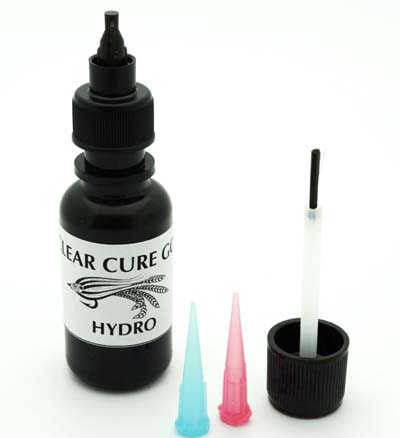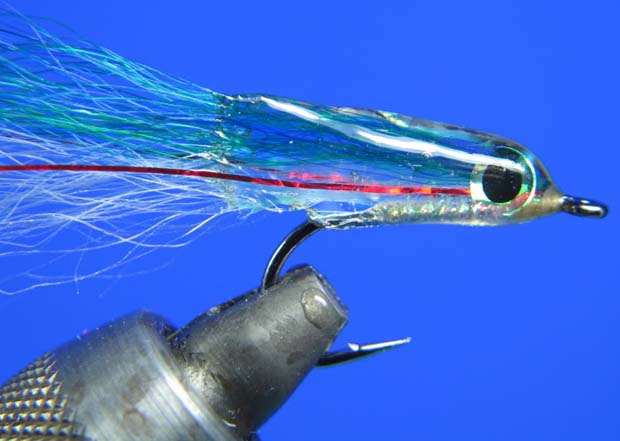Rube Goldberg fly tyers, like me, hate two-part epoxy, hot melt glue and silicone. Make life easy and go LCR
[dropcap]T[/dropcap]hey’re all messy, always produce a lot of wasted material and are not cheap considering the latter. Add the fact that you don’t need an epoxy rotor for curing or wait hours or a day for a cure, the time saved and cost factors become even more favorable for using Light Curing Resins (LCR). Note: the LCR’s are not cheap either, but you control usage, shape and force cure in seconds when you want it, not before. You control the cure.

Clear Goo, like all other LCR’s require a UV blue lamp to cure when inside. They will all cure in direct sunlight. Photo by Clear Goo.
Many suppliers of LCR make them available in varying viscosities. Buying varied viscosities comes in handy, especially if you’re using LCR on the body of the fly versus the head or eyes. One size fits all doesn’t work out well.
The only short suit with LCR is that if not properly cured or if the product inherently tends not to cure with a “hard” finish you’ll find that if you keep a bunch of flies in a box they’ll stick to each other. Sticky-tacky is easy to overcome by a little dab of rubbing alcohol, hand sanitizer with high content of alcohol or best with alcohol wipes. They’re easier to apply and real cheap. Some manufactures provide a final thin coat for curing, but don’t buy it – just use wipes.
Advantages of LCR over all other materials:
[highlight color=”white”]…[/highlight]Environmentally friendly.
[highlight color=”white”]…[/highlight]Versus epoxy, hot melt glue and silicone – LCR’s are much more controllable and the process of curing is governed by the tyer.
[highlight color=”white”]…[/highlight]Using an epoxy to create shape takes the patience of Job. Layer upon layer must made and each cured, add making batch after batch; well, you get the picture.
[highlight color=”white”]…[/highlight]With small flies sometimes only a small drop of LCR is required.
[highlight color=”white”]…[/highlight]LCR comes in rubbery and all the way to glass in hardness.
[highlight color=”white”]…[/highlight]No yellowing – epoxy and silicone will turn yellow.
[highlight color=”white”]…[/highlight]Not brittle – so an errant cast that lands an LCR coated fly on a hard structure won’t destroy the fly.
[highlight color=”white”]…[/highlight]Flies last much longer with LCR applied.
List of some product providers:
Loon UV Clear Fly Finish – one size fits all.
Bug-Bond – original and lite
Clear Cure Goo – has large selection (Flex, Tack Free, Thin, Thick, Hydro, Fleck and more).
Diamond Hard UV Resin (DeerCreek Company) – one product two viscosities.
Piketrek Mr. Bond UV Resin -one product dries hard and least expensive.
Solarez – Big company with resins for marine use and industrial use – has fly tying LCR’s and lamps – very reasonably priced.
Tuffleye – Core (volume), Flex (cures soft) and Finish (final coating).
Some tyers have discarded the use of thread altogether using only LCR, which has coined a new term called “welded” flies. Pete Gray, for example.
Here’s a video by notable saltwater tyer, Bob Popovics, showing how to best utilize LCR on a popular fly he ties. NOTE: It is not a “hurry” thing
[youtube id=”d5z1JgyPBjc?rel=0″ width=”620″ height=”360″]






